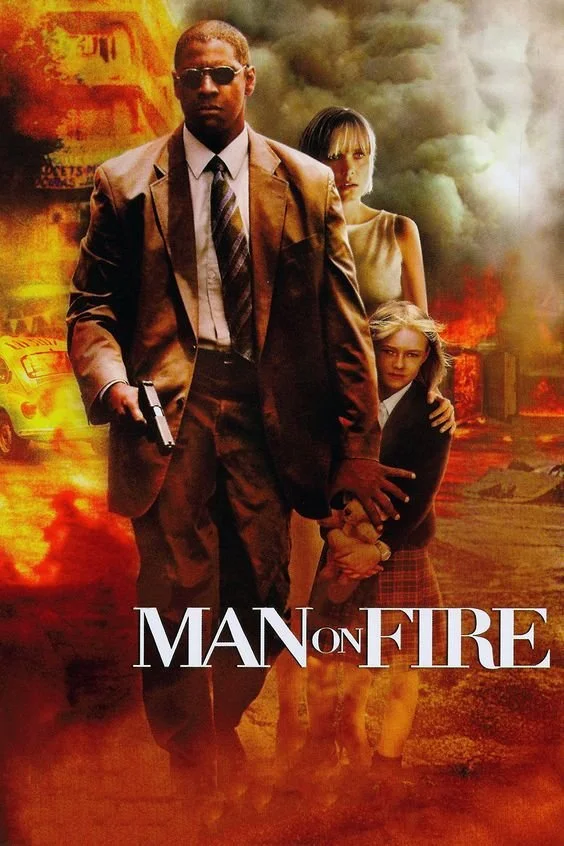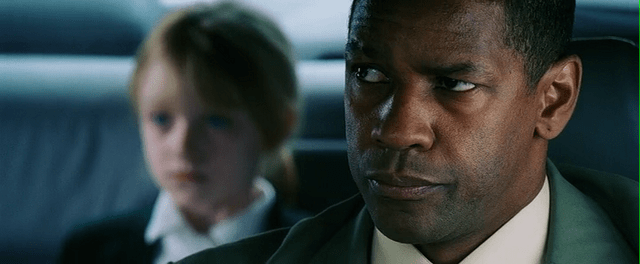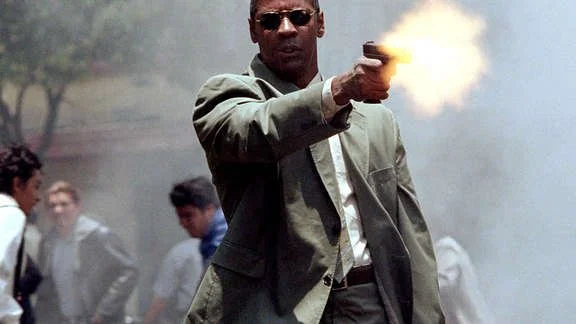Revenge is a Dish Best Served Cold
There’s no stopping him. Man on Fire (2004)
By C.A. Ramirez
Long before Denzel Washington was equalizing suburban misanthropes of their misdeeds, he played John Creasy, a down and out soldier of fortune with a drinking problem and a death wish in Man on Fire (2004). Nearly suicidal, he forms a fatherly bond with Pita Ramos, played masterfully by Dakota Fanning. The fate of the two become inextricably linked when Pita is kidnapped and Creasy is left for dead.
Denzel Washington and Dakota Fanning, Man on Fire (2004)
Liam Neeson’s Taken series is a song with one note compared to the orchestrated genius of the late Tony Scott’s reimagined version of the 1987 feature. Revenge films are a dime a dozen. Too many of them forget to inject an actual story and plot into the script. Ridley and Tony Scott are no slouches when it comes to manufacturing some of the most prolific movie moments in the history of cinema. The brothers dominate the camera the way Patton or McArthur command a war-torn battlefield. Every shot is pure perfection, and each moment has purpose. Man on Fire just might be Tony Scott’s masterpiece and should re-ignite the audience’s palate for slow burn action with true grit.
Modern tales of retribution are far too soft and cuddly for my taste. Splashing blood and sinew across the screen is for horror films, but it takes an artist of story and emotion to bring forth the kind of ruthless imagery that can properly transport the viewer from their couch to the forefront of spectacularly satisfying acts of cinematic violence. Sadistic scenes of retribution, abhorrent images of cruelty and carnage; yes, dear readers, 2004’s Man on Fire has it all. While these may seem like the elements that make up an entry in The Expendables series, each gloriously blood-soaked act of vengeance is not without incident.
The relationship between Creasy and Pita is sewn together piece by piece in front of us for the better part of the first hour of the film. We see Creasy come back to life from Pita’s warm heart, and when she is taken, our own hearts are plucked from our chest. Man on Fire is a rare film, transforming the calm and rationale among us into bloodthirsty harbingers of retribution. Creasy will maim, torture, and kill the dregs responsible for taking away the love of his life and we, the audience, will relish every sadistic moment because the movie took the time to develop a relationship that each one of us would not hesitate to kill for.
John Creasy, giving bad guys what they deserve in Man on Fire (2004).
Sweet dreams are made of these cinematic masterpieces. The tone of the movie is not a clean one; the world of executive protection and kidnapping shouldn’t be, and Tony Scott’s film is shot through a lens that captures that exact mood. These subtle touches are what make film engaging and help draw the audience in with the simplest of camera tricks. Entirely reminiscent of Steven Soderberg’s Traffic, where sequences set South of the border are given a wash in a light sepia tone that adds a level of abrasiveness that pushes and pulls the story back and forth across the U.S./Mexico border. Critics called Soderberg’s camera tones a bit ham-handed, but these are the kinds of tools available and when executed by talented directors and cinematographers, the world we see on the big screen is made even more tangible. Scott’s vision is a tsunami of criminal grime and greed that is purged by Washington’s character in a fantastically ferocious fashion. Brian Helgeland wrote the screenplay, and it is nothing short of spectacular, a masterpiece of redemption, retribution, and revenge. 2004’s Man on Fire is lightning in a bottle, a seminal screenplay directed by a legendary Hollywood visionary that takes the world we know it and tosses it into a fiery hot crucible.
Spoiler Alert!!!




